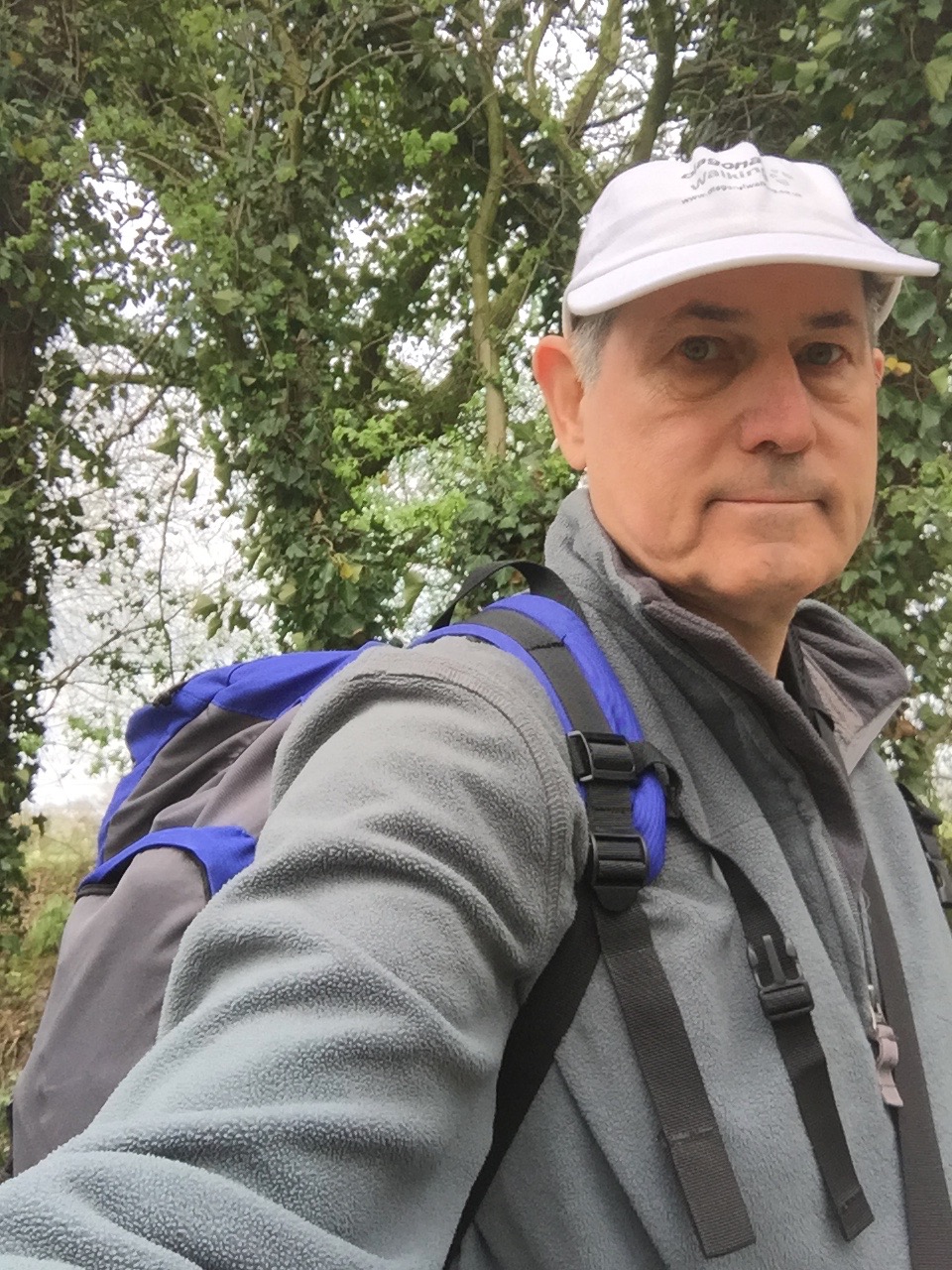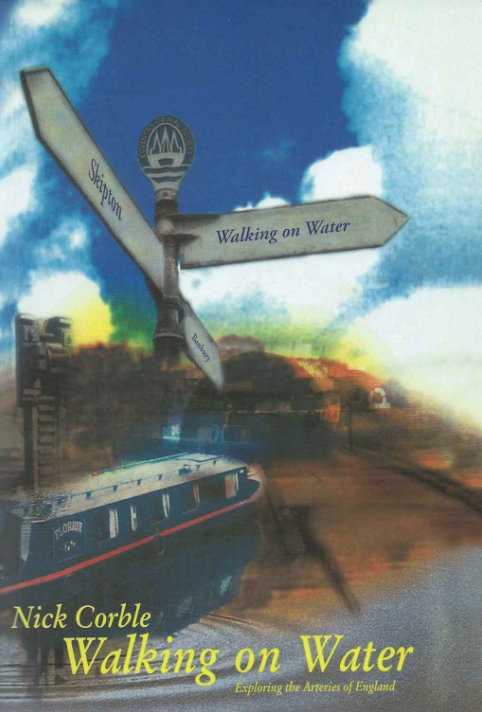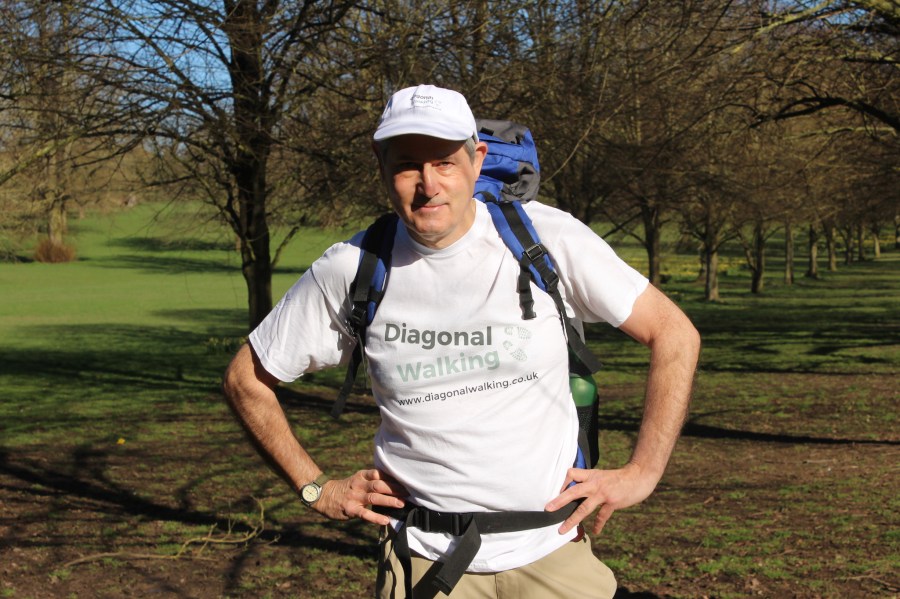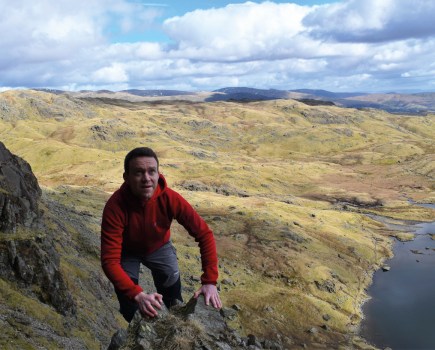Travel writer Nick Corble invites fellow walkers to walk with him on a million-step hike through England
In a unique experiment, Nick Corble, author of over 20 books, is inviting everyone to share – quite literally – all the steps involved in the writing of his latest book, a travelogue describing a million-step walk slicing through the English countryside.
Intrigued, we got in touch with Nick to find out more.
Please introduce yourself. Who are you and what do you do?
“Although I have spent most of my career in areas such as market research and management development, when I look back a large proportion of my time has always been spent writing. I had my own business, so was able to retire early (I’m approaching 60 – is that early?) in order to devote myself full time to writing.
“That said, I have spent a lot of my time writing over the past twenty years. I published my first travel book in 2000, and since then have had over twenty books published and a hundred-plus articles in various magazines and newspapers, from The Times to Practical Motorhome.”
Tell us about your planned route through the UK. What’s the objective, and how did you come up with the idea? What do you hope to achieve?

Nick Corble
“This has been an idea I’ve been brewing for over ten years. I first had an article published in a county lifestyle magazine in 2007 on placing the exact centre of England. It struck me then that it would be interesting to walk a line that ran through this point – I’ve gone for the OS’s preferred candidate of Fenny Drayton in Leicestershire, although there are other claimants to the crown – but diagonally. My route therefore follows a line drawn north-west through the centre, and extends to Formby in Lancashire to Dungeness in Kent. Along the way it passes through places such as Liverpool, Stoke, Northampton, St. Albans, the east of London and Maidstone. Funnily enough, I have personal associations with many of these places, so much so that when I was researching the route it just shouted out to me: ‘Do this!’
“The idea came from an old market research technique called the ‘Diagonal Slice’. This was a way of looking at a sample of people, or an organisation, by interviewing the person at the very top and those at the very bottom, and points in between. I thought doing something similar would be a wonderful way to try to understand what makes our country tick.
“My first book, written in 1999, was a travel book tracking my progress down the spine of the inland waterways network on a newly acquired narrowboat. This was called Walking on Water, and the idea was to try to get a deeper understanding of what made England tick, using the eve of the millennium as a starting point. I wanted to get a better understanding of the sort of country my young children were going to grow up in.
“We now seem to be on the brink of another seismic change with the Brexit vote, and I’m keen to understand what’s changed, and what sort of country any potential grandchildren might grow up in. My project isn’t a Brexit analysis, but it does provide a convenient reason for a reassessment.
“I hope to achieve a better understanding of my fellow country people. Inevitably, it will be my experience, but I wanted to broaden it out, to involve as many people as I could, so it wasn’t just a journey through the eyes of one person.”
What do you hope will be the scenic and natural highlights of your route?
“I am something of a water lover, so I’m particularly looking forward to walking the towpaths of a number of our canals as well as some major rivers. The original design of our canal network was to link the four great seaports of Liverpool, London, Bristol and Hull – the so-called ‘Grand Cross’ – so one of those lines, the Liverpool to London one, is pretty similar to my diagonal route. I have been conscious of not going canal crazy though, and wherever practical have designed my route to divert into smaller towns and villages to keep closer to my line, and of course to get a greater variety of experience. I am to never deviate more than 3 miles from the line and to stick to footpaths wherever possible.
“My route is a coast-to-coast route, but not the coast-to-coast route. The two extremes of my route couldn’t offer a clearer contrast, with the beaches of Formby and Crosby beautiful, wide and sandy, whilst that at Dungeness is stony and overlooked by a nuclear power station. Otherwise, part of the exercise is to discover, so I’m trying not to go in with too many preconceptions, other than to enjoy our amazing countryside and appreciate the equally incredible network of footpaths and other rights of way we are privileged to have in this country.”
You mentioned that the process of writing a travel book is often an opaque one. How do you hope to open up that process and reveal the work that goes into it?
“I love travel books, but they are necessarily limited to what happened to one person, seen through their eyes. I wanted to open this process up, and the advent of the internet, especially social media, seemed to make this possible. It didn’t exist, certainly social media didn’t, when I wrote my first book, and I want to turn its existence to my advantage.
“Whenever I do interviews, non-writers always seem to be fascinated by the process of writing – how do you get your ideas,? how long does it take to write? Questions like that come up all the time and they aren’t always easy to answer. How do you estimate the time it takes for an idea to germinate and take root? As such, I thought it would be fun, both for me and for others, to share my thoughts, the process and the ups and downs of the journey – of writing, not the walk, although that too – using various different media. I want to pull back the curtains and let people in on a little of the mystery.”
How can people follow your journey – or even participate themselves?
“I’ve created the idea of ‘Walk With Me’. This operates on two levels. The first is in person. If people feel they’d like to walk alongside me for a portion of the trip, even for just a mile, then I invite them to get in touch with me through my website www.diagonalwalking.co.uk, so we can start the conversation about logistics. There’s a dedicated page for that on the website here.
“The other dimension is virtually, and I’ve created all sorts of channels through which people can follow the walk vicariously. These include a YouTube channel through which I share videos from the walk in the moment, as well as podcasts and blogs, which tend to be more reflective, all accessed via the website, as well as accounts with Twitter, Instagram and Facebook.”
Tell us about your other books. Any that you think our readers would be particularly interested in?
 “I’ve written a number of local walking books for Countryside Books, but found the ‘twenty circular pub walks’ formula a bit restricting. I’ve also written a number of canal-related books, including a sort of primer to the canals called Britain’s Canals: A Handbook (Amberley Publishing) which was revised and reissued a couple of years ago, as well as a guide for people considering living on board a boat called A Beginner’s Guide to Living on the Waterways (The History Press), which came out last year and does what it says on the can. I have also written a number of fairground-related books with a collaborator. I have also turned my hand to fiction.
“I’ve written a number of local walking books for Countryside Books, but found the ‘twenty circular pub walks’ formula a bit restricting. I’ve also written a number of canal-related books, including a sort of primer to the canals called Britain’s Canals: A Handbook (Amberley Publishing) which was revised and reissued a couple of years ago, as well as a guide for people considering living on board a boat called A Beginner’s Guide to Living on the Waterways (The History Press), which came out last year and does what it says on the can. I have also written a number of fairground-related books with a collaborator. I have also turned my hand to fiction.
“Perhaps the book of greatest interest to your readers might be Walking on Water, my first, which is the inspiration behind Diagonal Walking, which like many of my books, is available as an e-book for Kindle.”








